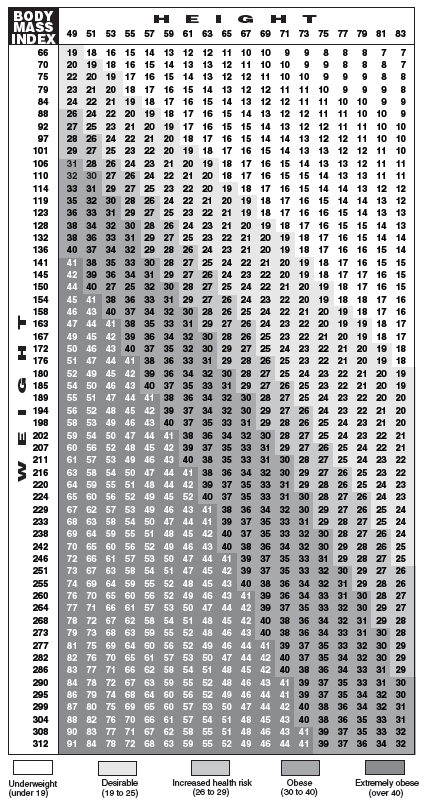Chapter 3 —Health-Related Fitness

Meaningful Activity
Activity that serves a purpose has meaning. Walking makes good sense, whether you are having fun with family or friends, going to work, or exercising with your dog. Walking on a treadmill is less meaningful, unless it is used as a substitute for more meaningful walking during bad weather. Select activities you enjoy or that prepare you for upcoming events or seasons. Lifelong exercisers engage in meaningful activity almost every day of their lives; they are positively addicted to physical activity. They exercise for fitness and health, but more importantly, they do so for their own satisfaction. Their activity has purpose, and yours should too.
All employees, not just those with a physically demanding occupation, should take part in a health-related fitness program. The program's goal is to improve the health and quality of life of all employees. Health-related fitness consists of the following:
Aerobic fitness—Aerobic activity engages large muscle groups in sustained activities such as walking, running, cycling, swimming, crosscountry skiing, rowing, paddling, or similar activities. Ideally, the activity should serve a purpose.
Muscular Fitness—Fitness ensures that you have enough strength, muscular endurance, and flexibility to carry out your daily tasks with vigor and alertness, and with the capacity to meet unforeseen emergencies. All employees should engage in core fitness training to prevent back problems. Weight training should be used to prevent injuries and to provide the strength and endurance you need for your favorite activities (such as leg strength and endurance for mountain biking or skiing).
Body Composition—One way to reduce the risk of becoming overweight, or of developing heart disease or diabetes is to maintain a body mass index (BMI) from 19 to 25 (figure 3.1), a healthy waist-to-hip ratio (figure 3.2), and a waist circumference of less than 40 inches for men and 35 inches for women.

Figure 3.1—Body mass index chart. Reprinted, with permission, from B.J. Sharkey
and S.E. Gaskill, 2007, Fitness & Health, 6th ed. (Champaign, IL: Human Kinetics), 242.
Energy Balance
Manage your weight by matching food intake to energy expenditure. Eat more when your energy expenditure is high—during the fire season, for instance. Eat less during the off season or increase physical activity to balance energy (caloric) intake with energy expenditure.

Figure 3.2—Waist-to-hip ratio. Reprinted, with permission,
from B.J. Sharkey and S.E. Gaskill, 2007, Fitness & Health,
6th ed. (Champaign, IL: Human Kinetics), 249.
For a long description of the image click on the image.
A health-related fitness program can be pursued at the work site, in a commercial health club, or wherever the employee chooses. Health fairs and periodic tests can help keep employees motivated. While some organizations use incentives to encourage participation, long-term involvement depends on your intrinsic motivation, exercising because it is meaningful and essential for your health and quality of life.
Researchers at the Human Population Laboratory of the California Department of Health published a list of habits associated with health and longevity, including:
- Regular physical activity
- Adequate sleep
- A good breakfast
- Regular meals
- Weight control
- Abstinence from smoking and drugs
- Moderate use of (or abstinence from) alcohol
The study found that men could add 11 years to their lives and women could add 7 years by following any six of the seven habits.
In 1995 the American College of Sports
Medicine and the Centers for Disease
Control recommended that every
American should accumulate 30 to 60
minutes of moderate intensity physical
activity most days of the week. Nine
years later (2004) the Institute of
Medicine extended this recommendation
to 60 or more minutes of moderate
activity in order to increase caloric
expenditure and slow the growing
epidemic of obesity. Now two-thirds of
the adult population in the United States
is overweight or obese.
The 2008 Physical Activity Guidelines for Americans, published by the U.S. Department of Health and Human Services, provides the following recommendations (http://www.health.gov/paguidelines/faqs.aspx#Question5).
- Adults should do 2 hours
and 30 minutes a week of
moderate-intensity, or 1
hour and 15 minutes (75
minutes) a week of
vigorous-intensity aerobic
physical activity, or an
equivalent combination of
moderate- and vigorous-intensity
aerobic physical
activity. Aerobic activity
should be performed in
episodes of at least 10
minutes, preferably spread
throughout the week.
- Additional health benefits
are provided by increasing
to 5 hours (300 minutes) a
week of moderate-intensity
aerobic physical
activity, or 2 hours and 30
minutes a week of
vigorous-intensity physical
activity, or an equivalent
combination of both.
- Adults should also do
muscle-strengthening
activities that involve all
major muscle groups
performed on 2 or more
days per week.
Those who use a pedometer should get
at least 10,000 steps per day to meet the
minimum activity recommendation. See
appendixes A, B, G, H, and I to help
you get started on a lifelong activity
program.
Core Training
Core training focuses on the central
portion of the body, providing a solid
foundation for performance and health.
Strong and balanced trunk muscles
(abdominal, back, chest, shoulder, and
hip muscles) allow workers to transfer
power better when they're using their
arms and legs. Well-trained core
muscles distribute the forces of hard
work, reducing the risk of injury. All
employees should engage in a core
training program (see appendix G for
core training exercises).

